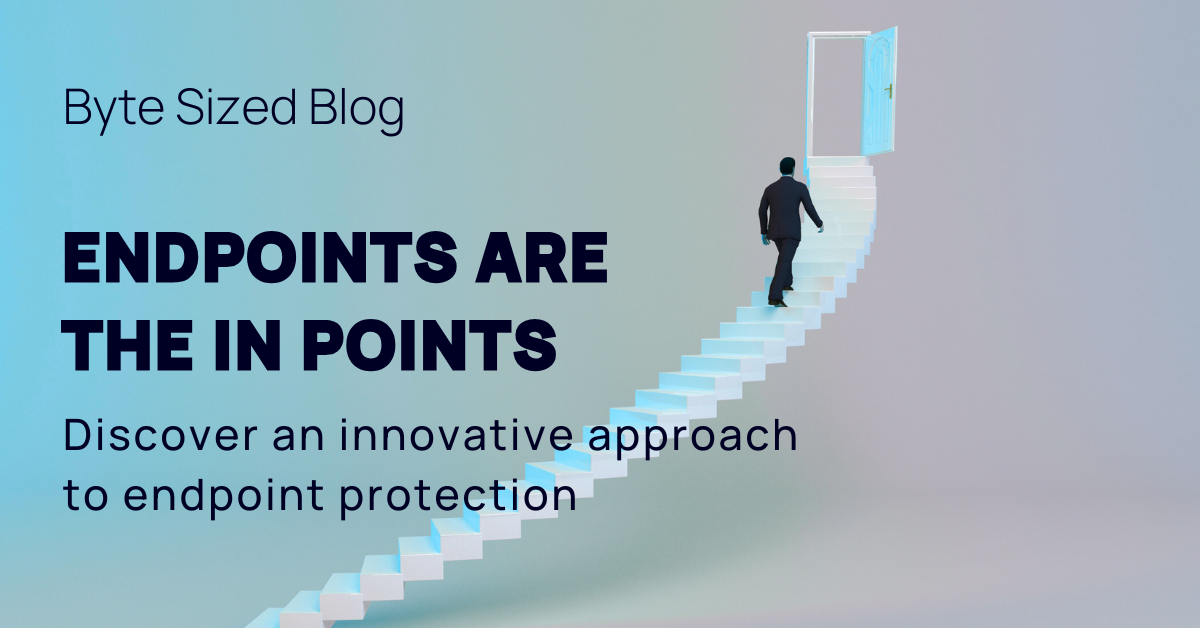
The Importance of Endpoint Protection for Businesses
by Gavin Sutton, Head of Marketing
Endpoints are everywhere, just look around you as you read this blog, and I’d bet you have at least two on your person right now? While cybersecurity threats continue to grow in number, so too do the number of endpoints companies are tasked with protecting. Laptops, desktops, mobile devices and servers provide a vast attack surface for cyber criminals to exploit, making endpoint protection an essential focus in any cybersecurity strategy. In this blog I’ll explore this threat vector in more detail and dive into how endpoint protection using a new whitelisting security approach can provide your customers with comprehensive protection.
A Growing Threat Landscape
Your customers are likely facing a growing barrage of cyberattacks, growing in both number and sophistication. With remote work having taken off during the pandemic, along with the adoption of BYOD policies, companies face added difficulties in achieving a sufficient level of endpoint security. Many cyber criminals now focus their attention on endpoints, with various studies suggesting that around 70% of data breaches originate at endpoint devices.
Endpoint threats can take many forms, including ransomware, phishing, malware and zero-day exploits. Statistics suggest that:
- Ransomware: In 2022, ransomware attacks on businesses occurred every 11 seconds, with global ransomware damage costs expected to reach $20 billion.
- Malware: Symantec reports that malware attacks increased by 358% in 2020, with endpoints being the primary target.
- Phishing: 91% of all cyberattacks start with a phishing email, often targeting users via their endpoint devices.
Without proper endpoint protection, businesses are vulnerable to these attacks, which can result in financial loss, reputational damage, and regulatory fines.
Major Threat Vector: Endpoints are the Inpoints
Endpoints are one of the weakest links in the cybersecurity chain. With so many devices connected to a network, or operating outside of the corporate network boundary, each potentially running outdated or unpatched software, the risk of an attack increases significantly. These devices often serve as entry points for attackers looking to infiltrate a company’s broader network, stealing sensitive data or launching more destructive attacks like ransomware.
Unlike traditional network-based security measures such as firewalls, that focus on protecting the central infrastructure, endpoint protection focuses on securing all individual devices that could be used to gain unauthorised access. Without comprehensive endpoint protection, any endpoint device could become an entryway for attackers.
Key reasons why endpoints are a significant threat vector include:
- Distributed workforce: With the rise of remote work, employees access company data from various devices and locations, often outside the secure perimeter of the company’s firewall.
- Shadow IT: Employees may install unauthorised software or applications on their devices, introducing vulnerabilities that IT teams are unaware of.
- Human error: End users are often the weakest link in security. A simple phishing email can lead to a breach if users unknowingly click on a malicious link or download malware. There is also the possibility they will become victims of crimes such as CEO fraud, where the attacker impersonates the CEO. Just visiting malicious or compromised websites can also be enough to become victim to a “drive-by-download” of malware or a dangerous browser attack.
These challenges make endpoint protection a critical layer of defence for businesses of all sizes.
ThreatLocker: A Comprehensive Endpoint Protection Solution
The case for a solution is clear, but for you and your customers, navigating through this saturated market can be a complex endeavour. Many platforms claim to provide comprehensive protection, but as the old saying goes, not all platforms are created equal. For Titan, this is where ThreatLocker stands out amongst the crowd, with a unique approach to endpoint protection. Here are some of the great benefits of their platform:
- Zero Trust Architecture: ThreatLocker is built from the ground up on a zero-trust model, so unlike traditional anti-virus and signature-based detection that react after threats are detected, their platform, from the outset, only allows authorised executables to run, authorised program behaviour to take place, and authorised parts of the filesystem to be accessed.
- Ringfencing Technology: ThreatLocker prevents applications from interacting with one another unless explicit permission has been given and it controls not only what software can run on endpoints, but also what that software is able to do once it is running. So even if a program is whitelisted to run, if it has been trojanised upstream and it attempts to do something it is not supposed to do, then it is blocked.
- Application Whitelisting: With this approach, ThreatLocker ensures companies reduce their risk of unknown or zero-day threats. Rather than blacklist harmful applications, their platform allows customers to whitelist applications meaning only those permitted can run on the endpoints – everything else is blocked.
- Granular Control: ThreatLocker puts IT admins in control over their endpoints to allow their company to enhance their security, providing granular control over which files, scripts, and applications can be executed, right down to individual file levels.
Why ThreatLocker is Different
While there are a multiple of Endpoint Protection Platformsa on the market, most look at detecting and mitigating known threats, leaving customers vulnerable to new and evolving attacks. With ThreatLocker’s disruptive zero trust, whitelisting approach, malicious executables simply cannot run – as nothing at all can run that is not in the trusted whitelist! By combining Ringfencing and application whitelisting, customers can take their threat prevention security on the endpoint to a completely new level.
Endpoint protection is incredibly important in today’s threat landscape, with attacks becoming more common and more sophisticated in nature. By securing endpoints, customers can protect a large attack surface, preventing breaches and ensuring their data stays secure. With ThreatLocker, companies have a proactive security solution that operates in a way that is different to many in this crowded space, putting the focus back on threat prevention, and ensures your customers take a zero trust approach to endpoint protection.
Get in touch to arrange a demo!